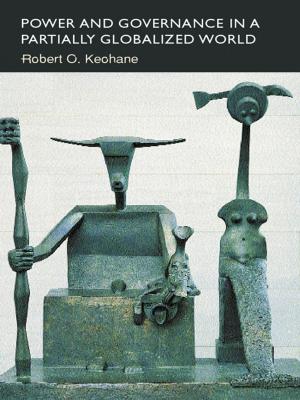The Empress Nurbanu and Ottoman Politics in the Sixteenth Century
Building the Atik Valide
Nonfiction, Social & Cultural Studies, Social Science| Author: | Pinar Kayaalp | ISBN: | 9781351596619 |
| Publisher: | Taylor and Francis | Publication: | April 9, 2018 |
| Imprint: | Routledge | Language: | English |
| Author: | Pinar Kayaalp |
| ISBN: | 9781351596619 |
| Publisher: | Taylor and Francis |
| Publication: | April 9, 2018 |
| Imprint: | Routledge |
| Language: | English |
Nurbanu (1525–1583) is one of the most prominent yet least studied royal women of the Ottoman dynasty. Her political and administrative career began when she was chosen as the favorite concubine of the crown prince Selim. Nurbanu’s authority increased when her son Murad was singled out as crown prince. By 1574, when her son, Murad III became Sultan, Nurbanu officially took on the title of Valide Sultan, or Queen Mother, holding the highest office of the imperial harem until her death in 1583.
This book concentrates on the Atik Valide mosque complex, which constitutes the architectural embodiment of Nurbanu’s prestige, power and piety. The arrangement of the chapters is designed to enable readers to reconsider Ottoman imperial patronage practices of the late sixteenth century using the architectural enterprise of a remarkable woman as the common thread. Chapter 1 provides a general history of the wqaf institution to inform on its origins and evolution. Chapter 2 looks closely at the political dealings of Nurbanu, both in the domestic and the international sphere, building upon research concerning Ottoman royal women and power dynamics of the sixteenth and seventeenth centuries. Chapter 3 presents a textual analysis of the written records pertaining to Nurbanu’s imperial mosque complex. Chapter 4 examines the distinctive physical qualities and functional features of the Atik Valide within its urban context. The book concludes by assessing to what extent Nurbanu was involved in the representation of her power and piety through the undertaking of her eponymous monument.
Providing a complete study of the life and times of this Ottoman empress, this book will appeal to students and scholars of Ottoman studies, gender studies, history of art and architecture, Islamic studies, history of religion and Middle Eastern studies.
Nurbanu (1525–1583) is one of the most prominent yet least studied royal women of the Ottoman dynasty. Her political and administrative career began when she was chosen as the favorite concubine of the crown prince Selim. Nurbanu’s authority increased when her son Murad was singled out as crown prince. By 1574, when her son, Murad III became Sultan, Nurbanu officially took on the title of Valide Sultan, or Queen Mother, holding the highest office of the imperial harem until her death in 1583.
This book concentrates on the Atik Valide mosque complex, which constitutes the architectural embodiment of Nurbanu’s prestige, power and piety. The arrangement of the chapters is designed to enable readers to reconsider Ottoman imperial patronage practices of the late sixteenth century using the architectural enterprise of a remarkable woman as the common thread. Chapter 1 provides a general history of the wqaf institution to inform on its origins and evolution. Chapter 2 looks closely at the political dealings of Nurbanu, both in the domestic and the international sphere, building upon research concerning Ottoman royal women and power dynamics of the sixteenth and seventeenth centuries. Chapter 3 presents a textual analysis of the written records pertaining to Nurbanu’s imperial mosque complex. Chapter 4 examines the distinctive physical qualities and functional features of the Atik Valide within its urban context. The book concludes by assessing to what extent Nurbanu was involved in the representation of her power and piety through the undertaking of her eponymous monument.
Providing a complete study of the life and times of this Ottoman empress, this book will appeal to students and scholars of Ottoman studies, gender studies, history of art and architecture, Islamic studies, history of religion and Middle Eastern studies.















